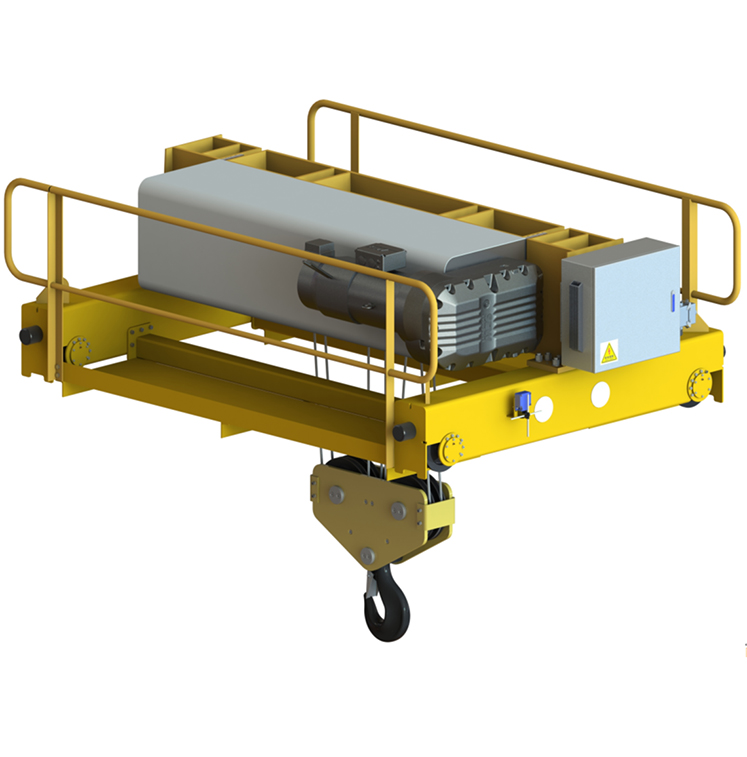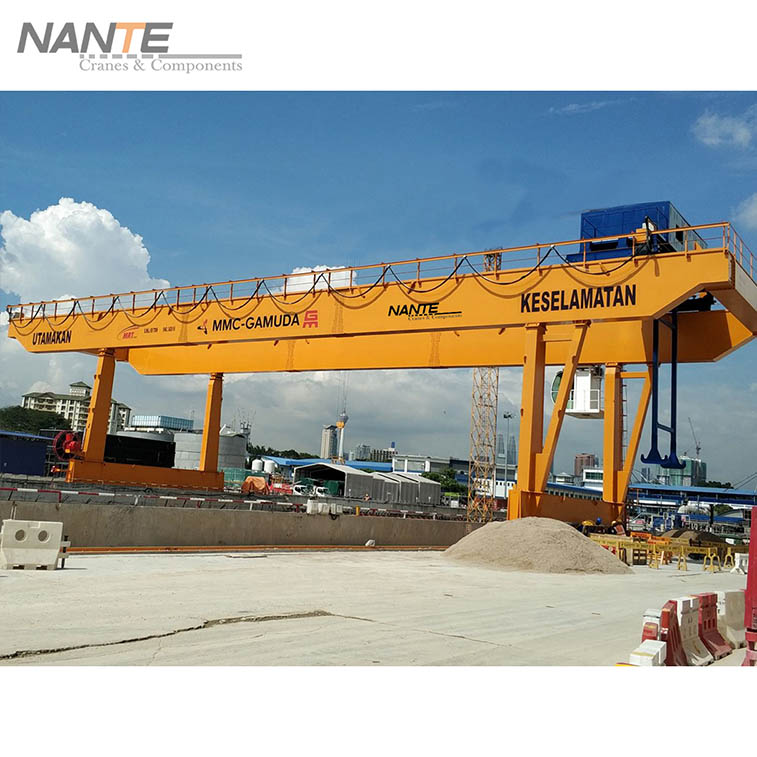Common issues with overhead cranes and how to fix them.
Date: 2024-08-22 Share:
In environments overhead cranes play a crucial role, in handling materials. However they present challenges that need to be addressed for maintaining productivity and ensuring safety. This piece will explore the problems linked to cranes and offer expert advice on effectively solving them.
Common Mechanical Issues and Their Solutions
Identifying Mechanical Wear and Tear
Overhead cranes often encounter the challenge of wear causing inefficiencies and safety risks. It is essential to conduct inspections, on components like hoists, pulleys and gears to detect wear and plan for timely part replacements. Understanding the root causes of wear such as prolonged usage, lack of lubrication and exposure to harsh environmental conditions is crucial, for effective maintenance.
Causes of Mechanical Wear
The main reasons, for wear in cranes are influenced by factors such as the environment, how loads are handled and the wear resulting from ongoing operation. As time passes components subjected to friction and pressure can wear down potentially causing failures if not identified promptly. External elements like moisture, dust and fluctuations in temperature can worsen the effects of wear and tear highlighting the importance of operators being diligent, in their monitoring efforts.
Regular Maintenance Practices
To prevent wear it’s crucial to set up a maintenance plan. Following maintenance tasks, like lubricating on schedule conducting inspections and replacing worn out parts promptly can greatly increase the longevity of cranes and improve their efficiency. Additionally incorporating a maintenance approach can detect problems, on ultimately saving time and resources in the future.
Preventing Structural Fatigue
The strength of cranes can be compromised by weariness eventually causing breakdowns if not dealt with proactively. It’s crucial to detect indicators of weariness such, as fractures or changes in the frame. Operators need to check the cranes framework, for any irregularities following heavy lifting tasks.
Early Signs of Structural Fatigue
Structural wear and tear starting to show up may first appear as sounds or vibrations while the crane is, in use. It’s crucial not to overlook them. Checking visually can spot any surface irregularities. Using methods like ultrasonic testing can uncover hidden problems, beneath the surface. Taking action promptly upon noticing these signs can help avoid breakdowns and prolong the cranes life.
Reinforcement Techniques
To improve the strength of cranes reinforcement methods can be utilized. This might involve installing supports opting for superior quality materials, for important parts and routinely strengthening welds. Seeking input from engineers to evaluate and suggest enhancements can also guarantee that the cranes structure is up to date, with requirements while prioritizing safety.
Electrical Problems and How to Solve Them
Understanding Electrical Failures
Electrical issues are another common challenge faced by overhead cranes, impacting overall functionality and safety. Understanding the types of electrical failures and their root causes is the first step in addressing these issues effectively. Failures may arise from worn-out components, environmental factors, or improper use.
Common Causes of Electrical Failures in Overhead Cranes
Common causes include motor overheating, frayed wiring, and malfunctions in control systems. High humidity, excessive dust, and temperature fluctuations can contribute to the deterioration of electrical components. Regular monitoring and maintenance of electrical systems are essential for avoiding potential failures that could impact operations.
Effective Troubleshooting Methods
Implementing troubleshooting methods, such as using diagnostic tools and visual inspections, can help identify electrical issues early on. Operators should familiarize themselves with common symptoms of electrical failures, such as inconsistent power supply and erratic movements of the crane. Developing a systematic approach to addressing these problems contributes to the efficient operation of overhead cranes.
Implementing Proper Wiring Standards
The integrity of wiring systems is crucial for the safe operation of overhead cranes. Implementing proper wiring standards helps to mitigate risks associated with electrical failures. Operators must understand the importance of using the correct wire types and sizes, as well as adhering to safety codes and guidelines during installation.
Importance of Proper Wiring
Proper wiring is vital not only for operational efficiency but also for safety compliance. Faulty wiring can lead to short circuits or electrical fires, posing considerable risks in industrial environments. Regular inspections and adherence to wiring standards ensure a reliable electrical system that supports operational demands.
Steps to Ensure Reliable Wiring Systems
To ensure reliable wiring systems, operators should follow best practices, such as using protective conduits, securing connections, and regularly inspecting for wear or damage. Training personnel on electrical safety and troubleshooting techniques can further enhance the reliability of the wiring systems associated with overhead cranes.
Load Handling and Safety Concerns
Ensuring Safe Load Management
Proper load management is critical for the safe operation of overhead cranes. Operators must ensure that loads are correctly distributed to avoid tipping or overstressing the crane structure. Effective load handling contributes not only to safety but also to efficient operations.
Correct Load Distribution Methods
To achieve correct load distribution, operators should be familiar with the crane’s specifications and capacity limits. Utilizing load indicators and consulting load charts can help in planning safe lifting operations. The design of the lift, including the use of slings and spreader bars, should also be considered to distribute loads evenly and minimize risks.
Avoiding Overloading Situations
Overloading is a common concern that can lead to expensive damages and safety incidents. Continuous monitoring of weight loads is essential for avoiding overloading situations. Training operators on load limits and the consequences of overload contributes to a safer working environment and operational efficiency.
Safety Protocols and Training
Establishing comprehensive safety protocols is paramount in addressing load handling and safety concerns related to overhead cranes. Regular training programs for crane operators ensure they are aware of potential hazards and best practices for safe operations.
Key Safety Training Programs
Implementing key safety training programs focuses on the fundamentals of operating overhead cranes, including load management techniques, hazard identification, and emergency response plans. Ongoing training ensures that operators remain compliant with safety regulations and are competent in using the equipment effectively.
Regular Safety Inspections
Conducting regular safety inspections is a fundamental aspect of crane maintenance. Inspections should assess not only the mechanical and electrical systems but also the overall operational environment. This incudes checking for potential hazards, ensuring that safety devices are functioning correctly, and verifying compliance with industry standards. Regular safety audits contribute to a culture of safety and accountability within the organization.
Operational Efficiency Challenges
Enhancing Operator Efficiency
Ergonomic Controls for Reduced Strain
Ergonomic controls play a pivotal role in ensuring that overhead crane operators can perform their tasks with minimal physical strain. By designing control systems that align with human biomechanics, operators can reduce the risk of musculoskeletal injuries. Incorporating adjustable controls and intuitive layouts allows for easy access and manipulation, facilitating precise operation without unnecessary exertion. Additionally, providing operators with comfortable seating and positioning assists in achieving optimal posture, further diminishing strain during extended operation periods.
Technological Tools to Assist Operators
Integrating technological tools into the operation of overhead cranes can significantly enhance operator efficiency. Advanced systems, such as remote controls and automated monitoring tools, allow operators to manage crane functions from a distance, reducing the need for physical presence in potentially hazardous areas. Furthermore, the use of augmented reality (AR) and virtual reality (VR) can provide training scenarios that enhance an operator’s familiarity with crane operations without the risks associated with on-the-job training. These technological advancements not only streamline crane handling but also ensure that operational tasks are executed with confidence and safety.
Reducing Downtime with Efficient Processes
Strategies for Quick Repairs
Minimizing downtime is essential for maintaining productivity when operating overhead cranes. Implementing strategies like maintaining an adequate inventory of spare parts ensures that quick repairs can be conducted without delay. Additionally, training operators and maintenance personnel in fundamental troubleshooting techniques can enable them to identify issues early and apply quick fixes. Establishing a clear communication line with service providers can also facilitate faster response times when more serious repairs are necessary, effectively reducing downtime and maintaining operational continuity.
Implementing Predictive Maintenance
Implementing maintenance is a tactic to improve the lifespan of overhead cranes. By using data analysis and monitoring technology operators can evaluate the condition of equipment. Anticipate malfunctions, in advance. Sensors offer information on mechanical and electrical operations notifying operators of any irregularities that could require maintenance. This proactive method not tackles problems before they escalate into repairs but also optimizes the timing of maintenance activities minimizing unexpected downtime and guaranteeing that cranes are ready, for use when necessary.
Brand Insight: Nante Overhead Cranes Solutions
Overview of Nante’s Product Lineup in Overhead Cranes
Nante is well known for offering a variety of cranes that cater to different industrial needs. They offer a range of crane options, including single and double girder cranes, gantry cranes and custom lifting systems designed for uses. Every crane model prioritizes safety, efficiency, in operation and longevity enabling businesses to choose solutions that suit their needs. Nantes dedication to innovation guarantees that their cranes incorporate cutting edge technologies to improve usability and productivity, in industries.
Unique Features of Nante Overhead Cranes
Nante overhead cranes stand out for their features designed to enhance safety and efficiency during operations. A lot of these cranes come with control systems that offer control and accurate positioning of loads. These cranes are also built with parts that reduce wear and tear prolonging their lifespan and maintaining performance. Moreover some models have designs making it simpler to upgrade and customize them to meet changing needs.
Customer Support Services Provided by Nante
Nante shows its dedication to keeping customers happy by offering a range of support services. They provide training programs, for operators after the sale ensuring they can handle crane operations safely and efficiently. Nante also offers maintenance services, like inspections and repairs to keep cranes in condition for as long, as possible. Their customer service team is quick to respond to any questions or issues helping to build lasting relationships and ensure operations.
Final Thoughts on Addressing Overhead Crane Challenges
Dealing with the obstacles linked to cranes involves taking an approach that encompasses proactive upkeep targeted employee training and the integration of, up to date technology. Recognizing inefficiencies and giving importance to operator setups enable businesses to enhance employee contentment while upholding stringent safety protocols, in their operations. Upkeep and predictive methods counteract equipment wear and downtime guaranteeing that cranes function at efficiency throughout their lifespan.
Furthermore by partnering, with companies such as Nante businesses can take advantage of cutting edge solutions. Reliable support services tailored to their individual requirements. In essence adopting an approach, to overseeing cranes will not just tackle current obstacles but also shield against potential problems nurturing a secure and productive work setting that prioritizes efficiency and well being.





